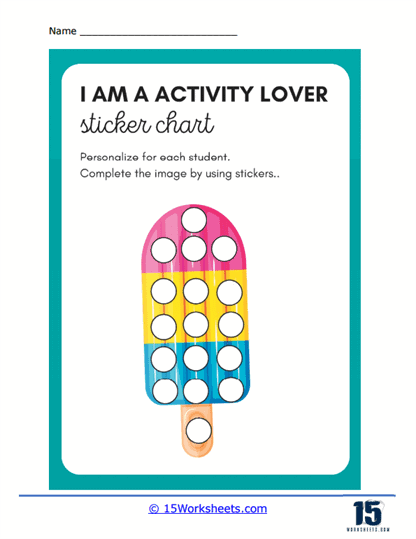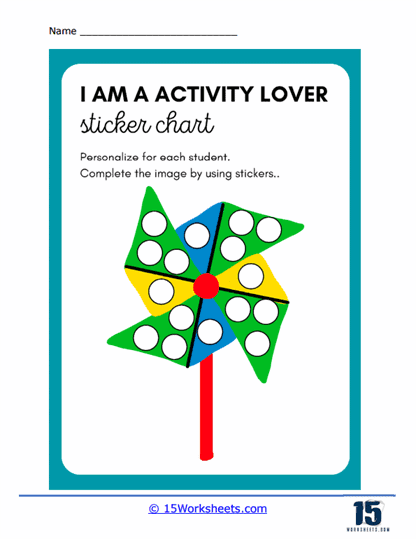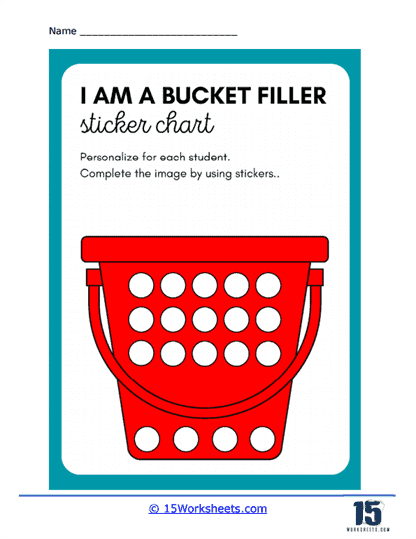Sticker Activity Worksheets
All About These 15 Worksheets
Preschool is a pivotal stage in a child’s development, where they begin to explore the world around them and acquire fundamental skills. At this age, engaging and interactive learning experiences are crucial for fostering cognitive, motor, and socio-emotional development. These worksheets were developed to combine the joy of stickers with the excitement of learning. These worksheets are meticulously crafted to provide young learners with hands-on activities that promote creativity, fine motor skills, problem-solving, and early academic concepts.
What Are Sticker Activity Worksheets?
Sticker activity worksheets for preschoolers will engage young children in a fun and interactive way while promoting various skills and concepts. These worksheets typically involve placing stickers on designated areas of a worksheet to complete a picture, match objects, or reinforce learning concepts.
Sticker activities require children to peel off stickers and place them precisely on specific spots. This helps develop their fine motor skills, including finger dexterity and hand-eye coordination.
These worksheets can be designed to reinforce various early learning concepts such as colors, shapes, numbers, letters, animals, and more. By matching stickers to corresponding images or completing patterns, children can enhance their cognitive skills and knowledge.
Completing sticker activities requires children to focus on the task at hand, follow instructions, and pay attention to details, fostering the development of these important skills. Some of the sticker worksheets include puzzles or challenges that require children to think critically and problem-solve as they determine where each sticker belongs. Some of the sheets also include labels or prompts that encourage children to name the objects or animals they are placing stickers on, promoting vocabulary development and language skills.
Types of Exercises
Sticker Matching – The worksheet features blank shapes or outlines of objects, and children use stickers to match and place them in the corresponding spaces. Sticker matching exercises enhance visual discrimination skills and encourage children to recognize and categorize objects based on their attributes, such as shape or color.
Scenic Decoration – Preschoolers are presented with a scene, such as a park, underwater world, or farm. They use stickers to add elements like trees, animals, and people to complete the scene. Scenic decoration exercises stimulate creativity and storytelling abilities. Children learn to create narratives and develop their imagination while understanding the concept of context.
Alphabet and Letter Recognition – The worksheet includes letters of the alphabet with empty spaces beside them. Children must find the corresponding letter stickers and place them next to the letter on the page. Alphabet recognition is a fundamental literacy skill. These exercises introduce young learners to letters, their shapes, and the relationship between letters and sounds.
Number Recognition and Counting – The worksheet displays numerals along with spaces. Children use number stickers to match and place them in the correct sequence. Number recognition and counting exercises introduce basic numeracy concepts. Preschoolers practice identifying numbers and understanding their order.
Pattern Completion – In this activity, children are presented with incomplete patterns, shapes, or sequences. They use stickers to complete the patterns. Pattern completion exercises enhance problem-solving skills and pattern recognition abilities. Children learn to identify and predict sequences.
Color Matching – The worksheet features spaces with different colors, and children use stickers in corresponding colors to fill in the spaces. Color matching activities promote color recognition and help children differentiate and identify various colors.
Story Sequencing – Sticker Activity worksheets may include story sequences with missing parts. Children use stickers to complete the story by placing them in the correct order. Story sequencing exercises improve comprehension and narrative skills. Children learn to organize events logically and understand the concept of a story’s beginning, middle, and end.
Shape Exploration – The worksheet contains various shapes, and children use stickers to create their own designs, patterns, or pictures using the shapes as building blocks. Shape exploration exercises encourage creativity, spatial awareness, and geometric understanding.
Emotion Expression – Some worksheets feature faces or characters with blank expressions. Children use stickers depicting different facial expressions (happy, sad, surprised) to convey emotions. Emotion expression exercises help children understand and express emotions, fostering social and emotional development.















